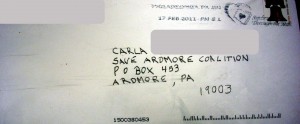The recent discussion of Union-Chadds Ford School District’s fact-finding report and their teachers union vote not to accept plus the potential of a teacher’s strike in the Perkiomen Valley School District continues to challenge me to understand the process and the ‘what if’s’.
In my last post, I asked some questions to which several of you kindly responded. However, one question lingers. With many of the school districts (not necessarily T/E) in an economic crisis, what happens if a school district simply does not have the money to meet the demands of a teachers union?
I understand that once a teacher’s contract ends, the teachers continue to work to the ‘old’ contract. However, perhaps 3 years ago when the last contract was written, the school district’s economic outlook was far different. If you set aside an increase in teacher salaries and/or benefits, what if a school district has no fund balance and cannot meet the current teacher contract requirements. What happens? How do these school districts maintain a status quo of the old teacher’s contract? Historically, I do not think that the current economic climate coupled with the pension crisis has existed during the last couple of decades (if ever) in Pennsylvania. Without a precedent, legally what can be done — what is the solution?
Pennsylvania state law permits staff reduction in a school district under very specific conditions – if a program is eliminated or if a school consolidates or school district reorganization requires it. Currently, the state law does not permit teacher furloughs for economic necessity reasons.
State Senator Mike Folmer (R-Lebanon County) is looking to change the state law on teacher furlough and give school boards the ability to reduce staff for ‘economic reasons’. For obvious reasons, teacher unions strongly oppose this idea whereas a number of economically challenged school districts support Folmer’s idea. This issue is rising to the forefront as school districts could face the possibility of severe cutbacks from state funding next year. Pennsylvania is facing a $4 billion budget deficit next year.
To meet the demands of the enormous budget gap, school districts across the Commonwealth are no doubt going to see a steep drop in state aid. What alternatives currently exist for school districts to fund their deficit? Assuming a school district does not have a fund balance (or at a minimum, a diminishing fund balance) their options are limited. They can raise property taxes, cut programs, or do a little bit of both. However, we know that state law compels school districts to limit property tax increases to a cap set by the state or seek voter approval for higher tax increases. Folmer hopes his legislation will allow more flexibility for the school districts; they could avoid program cuts by teacher furloughs based on economic necessity.
It is interesting to look at the arguments on both sides of the issue. The teachers unions argue that furloughing teachers could affect the integrity of the education program, lead to larger class sizes and put disadvantaged students at greater risk. There is a feeling among the teacher unions that the students would be shortchanged with the reduction in staff.
The argument from the other side (the school boards) is that this tool created by Folmer’s legislation could help the school districts avoid eliminating programs as a means of cutting expenses. Some school districts in Pennsylvania (fortunately not T/E) are in extreme financial situations. Economic hardship has backed some school districts in to a corner; how they are going to resolve their financial issues. For those school districts, maybe Folmer’s legislation to furlough teachers for economic reason is their only lifeline.
Problems are inherent in this kind of legislation . . . . How do school districts resolve the challenge of determining which teachers or administrators to furlough? How would school districts avoid the pitfall of arbitrary or subjective decisions in the furlough process?

